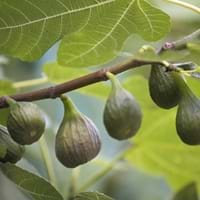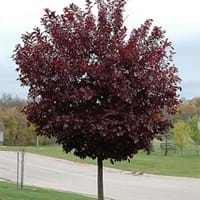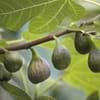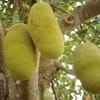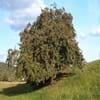Life Span
Annual
Perennial
Origin
Mediterranean, Western Asia
North America, United States, Northeastern United States, Mid-Atlantic United States, Southeastern United States, North-Central United States, South-Central United States, Texas
Types
Not Available
not available
Habitat
Cropland, Rocky areas
Boggy areas, Fens, Fields, meadows, Swamps, Woodlands
USDA Hardiness Zone
Not Available
4-9
AHS Heat Zone
Not Available
8-4
Sunset Zone
H1, H2, 4, 5, 6, 7, 8, 9, 12, 13, 14, 15, 16, 17, 18, 19, 20, 21, 22, 23, 24
1a, 1b, 2a, 2b, 3a, 3b, 4, 5, 6, 7
Habit
Oval or Rounded
Thicket/Colonizing
Flower Color
Green
Not Available
Flower Color Modifier
Bicolor
Not Available
Fruit Color
Green, Purple, Dark Green, Bronze, Brown
Red
Leaf Color in Spring
Green, Dark Green
Not Available
Leaf Color in Summer
Green, Dark Green
Not Available
Leaf Color in Fall
Green, Dark Green
Not Available
Leaf Color in Winter
Light Green
Not Available
Leaf Shape
Maple shaped
Oblovate
Plant Season
Spring, Summer, Fall
Spring, Fall, Winter
Sunlight
Full Sun, Partial Sun, Partial shade
Full Sun, Partial Sun
Type of Soil
Clay, Loam, Sand
Clay, Loam
The pH of Soil
Acidic, Neutral
Acidic, Neutral, Alkaline
Soil Drainage
Well drained
Average
Bloom Time
Spring, Early Summer
Late Spring
Tolerances
Frost
Not Available
Where to Plant?
Ground, Pot
Ground, Pot
How to Plant?
Leaf Cutting, Seedlings, Stem Planting
Divison, Seedlings
Plant Maintenance
Medium
Medium
Watering Requirements
Needs watering once a week, Requires regular watering
Keep the ground moist but not water-logged
In Summer
Lots of watering
Lots of watering
In Spring
Moderate
Moderate
In Winter
Average Water
Average Water
Soil pH
Acidic, Neutral
Acidic, Neutral, Alkaline
Soil Type
Clay, Loam, Sand
Clay, Loam
Soil Drainage Capacity
Well drained
Average
Sun Exposure
Full Sun, Partial Sun, Partial shade
Full Sun, Partial Sun
Pruning
Remove damaged leaves, Remove dead branches, Remove dead leaves
Prune after flowering, Prune in early spring, Remove damaged leaves, Remove dead branches, Remove dead leaves
Fertilizers
All-Purpose Liquid Fertilizer
All-Purpose Liquid Fertilizer, Compost, Fertilize every year, Mulch, Nitrogen
Pests and Diseases
Red blotch
Aphids, Apple Maggot, Fall Webworm, Red blotch, Scale
Plant Tolerance
Frost
Not Available
Flowers
Insignificant
Showy
Flower Petal Number
Not Available
Not Available
Foliage Texture
Coarse
Not Available
Foliage Sheen
Matte
Not Available
Allergy
no allergic reactions
Not Available
Aesthetic Uses
Not Used For Aesthetic Purpose
Showy Purposes
Beauty Benefits
Not Available
Not Available
Environmental Uses
Air purification
Air purification
Medicinal Uses
Asthma, constipation, Diabetes
Not Available
Part of Plant Used
Fruits
Fruits
Other Uses
Culinary use, Used As Food
Used As Food, Used as Ornamental plant
Used As Indoor Plant
No
No
Used As Outdoor Plant
Yes
Yes
Garden Design
Container, Edible, Feature Plant, Fruit / Fruit Tree, Houseplant, Topiary / Bonsai / Espalier, Tropical
Cutflower, Mixed Border, Screening, Wind Break
Botanical Name
FICUS carica
ARONIA arbutifolia
Common Name
Chicago Hardy Fig
Red Chokeberry
In Hindi
अंजीर
लाल Chokeberry
In German
Feige
Rote Apfelbeere
In French
figue
Red Chokeberry
In Spanish
higo
rojo Chokeberry
In Greek
Σύκο
κόκκινο Chokeberry
In Portuguese
Figura
Red Chokeberry
In Polish
Figa
Red aronii
Phylum
Not Available
Magnoliophyta
Class
Magnoliopsida
Magnoliopsida
Clade
Angiosperms, Eudicots, Rosids
Angiosperms, Eudicots, Rosids
Tribe
Ficeae
Not Available
Subfamily
Not Available
Not Available
Number of Species
Not Available
Not Available
Importance of Chicago Hardy Fig and Red Chokeberry
Want to have the most appropriate plant for your garden? You might want to know the importance of Chicago Hardy Fig and Red Chokeberry. Basically, these two plants vary in many aspects. Compare Chicago Hardy Fig and Red Chokeberry as they differ in many characteristics such as their life, care, benefits, facts, etc. Every gardener must at least have the slightest clue about the plants he wants to plant in his garden. Compare their benefits, which differ in many ways like facts and uses. The medicinal use of Chicago Hardy Fig is Asthma, constipation and Diabetes whereas of Red Chokeberry is Not Available. Chicago Hardy Fig has beauty benefits as follows: Not Available while Red Chokeberry has beauty benefits as follows: Not Available.
Compare Facts of Chicago Hardy Fig vs Red Chokeberry
How to choose the best garden plant for your garden depending upon its facts? Here garden plant comparison will help you to solve this query. Compare the facts of Chicago Hardy Fig vs Red Chokeberry and know which one to choose. As garden plants have benefits and other uses, allergy is also a major drawback of plants for some people. Allergic reactions of Chicago Hardy Fig are no allergic reactions whereas of Red Chokeberry have Not Available respectively. Having a fruit bearing plant in your garden can be a plus point of your garden. Chicago Hardy Fig has no showy fruits and Red Chokeberry has showy fruits. Also Chicago Hardy Fig is not flowering and Red Chokeberry is not flowering . You can compare Chicago Hardy Fig and Red Chokeberry facts and facts of other plants too.
